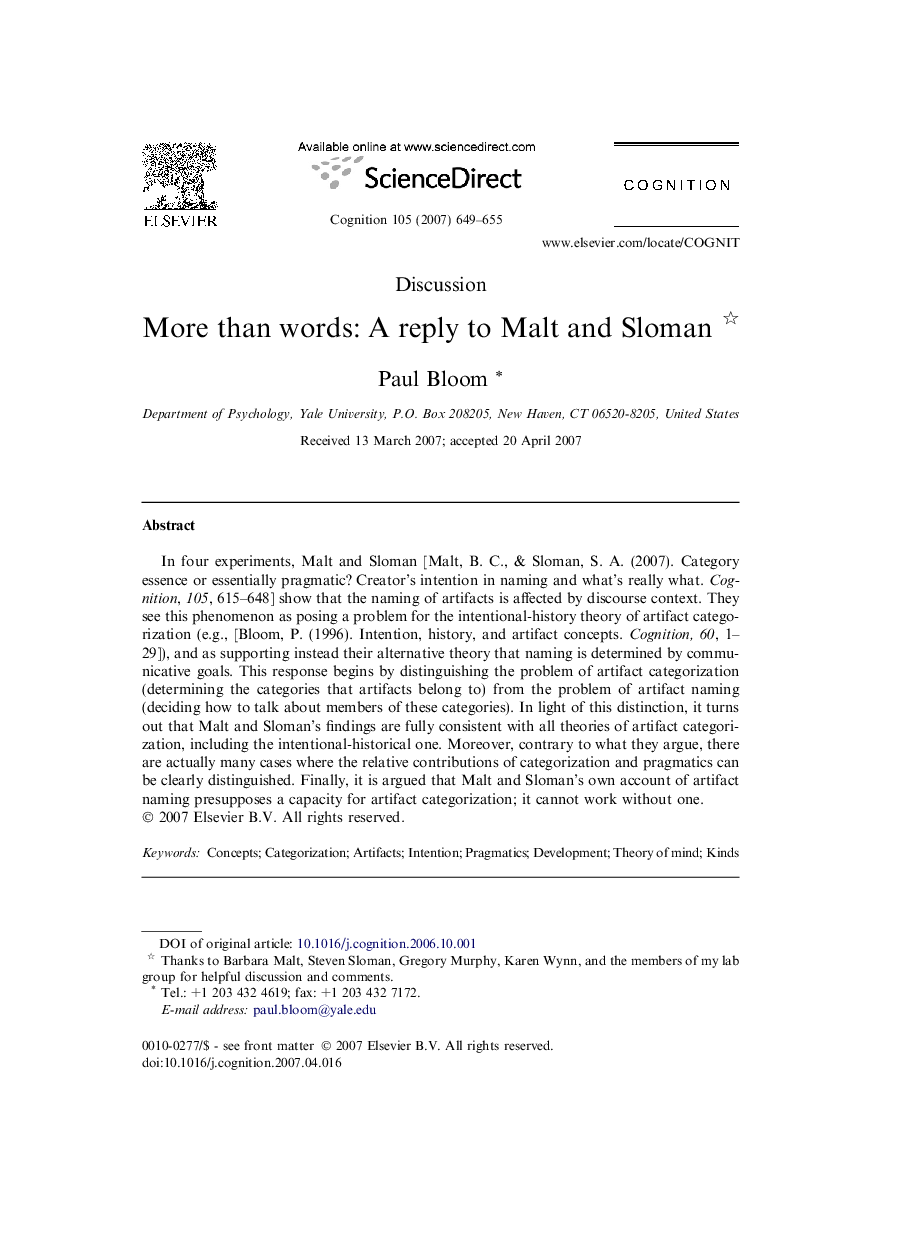| Article ID | Journal | Published Year | Pages | File Type |
|---|---|---|---|---|
| 926825 | Cognition | 2007 | 7 Pages |
In four experiments, Malt and Sloman [Malt, B. C., & Sloman, S. A. (2007). Category essence or essentially pragmatic? Creator’s intention in naming and what’s really what. Cognition, 105, 615–648] show that the naming of artifacts is affected by discourse context. They see this phenomenon as posing a problem for the intentional-history theory of artifact categorization (e.g., [Bloom, P. (1996). Intention, history, and artifact concepts. Cognition, 60, 1–29]), and as supporting instead their alternative theory that naming is determined by communicative goals. This response begins by distinguishing the problem of artifact categorization (determining the categories that artifacts belong to) from the problem of artifact naming (deciding how to talk about members of these categories). In light of this distinction, it turns out that Malt and Sloman’s findings are fully consistent with all theories of artifact categorization, including the intentional-historical one. Moreover, contrary to what they argue, there are actually many cases where the relative contributions of categorization and pragmatics can be clearly distinguished. Finally, it is argued that Malt and Sloman’s own account of artifact naming presupposes a capacity for artifact categorization; it cannot work without one.
